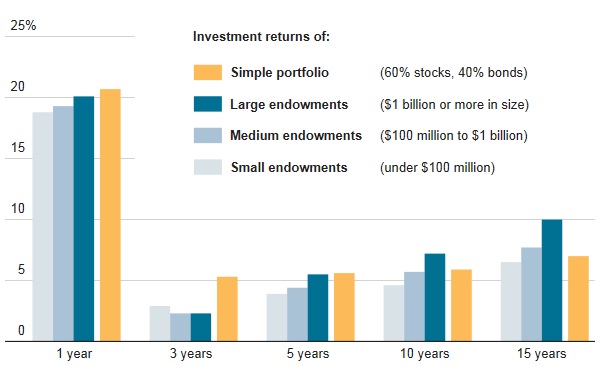The Bible is full of stories of God’s people living in exile on their own volition. A famine occurred in the land of “milk and honey”, so the Hebrews moved to Egypt at the time of Joseph. The father-in-law, brother-in-law and husband of Ruth left Israel to live among the Moabites during a famine. Mordecai and Esther lived in Babylon among the Persians, even though God called his people to rebuild Jerusalem.
We at Smead Capital Management (SCM) believe that institutional and individual investors have moved their asset allocation away from large cap US stocks. Institutions are in exile in private equity, hedge funds and all things commodity and BRIC-trade related. Individuals are living in bond land and the rest of their liquid assets are residing in wide asset allocation through funds and ETFs.
Why did the Hebrew people get into so much trouble? They didn’t rely on God’s promise to take care of them even in famine. The Israelites stayed in Egypt long after the famine ended in Israel and ended up slaves to Pharaoh. Ruth’s male relatives dropped dead among the Moabites, stranding their families. Mordecai allowed his adopted daughter to sleep with the King. She became Queen and used her leverage to keep Haman from slaughtering all the Jewish people.
A famine occurred in the US stock market from March 10, 2000 to March 9, 2009. It was teed up by the 1990′s tech stock and large-cap growth stock boom. This triggered a movement out of long-only U.S. large-cap equities. According to the NACUBO studies done in 2010 and 2002, the pool of endowment funds sampled had only 15% in U.S. Equities on a dollar-weighted basis in 2010 vs. 36.7% eight years earlier.
In the aftermath of two 40-plus percent US stock market declines, investors exiled themselves voluntarily. We believe they lost faith in the best performing liquid asset class because they don’t think the ups and downs are worth the historically-superior return. Stocks have recovered nicely, while individuals loaded the truck with bond funds. According to the Lipper organization, US mutual fund investors have net-liquidated US large-cap equity mutual funds for 40 consecutive months. Institutions loaded up on illiquid private equity investments and what we believe are super-risky commodity/BRIC-trade related investments after 10 years of red-hot performance. Those returns were high both historically and compared to US large cap equity indices. Again referring back to the NACUBO studies, endowment funds increased their participation in alternative strategies from less than 20% in 2002 to 52% in 2010 on a dollar-weighted basis.
Why did the Hebrews stay in exile? They got comfortable with the early years in exile, but the decline in their circumstances was subtle and incremental. We like to think that institutional and individual investors are like frogs put into a pot of water set to heat to the boiling point. At first, the temperature is fine and it slowly heats up. Eventually it gets so hot that it is unbearable and the owners scream, “Get me out of here”. The chart below shows how poor the returns have been over the last 3-years for the kind of asset allocation that existed in the latest NACUBO study (compared to a 60/40 stock bond mix, let alone 100% US equity).
Source: New York Times, October 12, 2012
THERE IS NOTHING TO INDICATE THAT THE FROGS ARE JUMPING OUT OF THE POT. In our opinion, the more years it takes for people to come back out of exile, the more imprisoned investors are going to feel by their portfolio makeup. For example, trying to make a retirement living out of US treasury and certificate of deposit interest rates is like building pyramids out of straw!
The US stock market can have a significant correction at any time and most likely will every year. It is likely to suffer a bear market once every 5 years on average. Those mini-famines are the price you pay to earn 8-10 percent over long-term holding periods (15-20 years). We aren’t concerned about the short-run outlook for US stocks because most of the money hasn’t even begun to come back from voluntary exile. When commodities and bonds inflict pain on the investment frogs, prices could be quite a bit higher for the kind of companies which fit our eight proprietary criteria.
Best Wishes,
William Smead
The information contained in this missive represents SCM’s opinions, and should not be construed as personalized or individualized investment advice. Past performance is no guarantee of future results. It should not be assumed that investing in any securities mentioned above will or will not be profitable. A list of all recommendations made by Smead Capital Management within the past twelve month period is available upon request.














